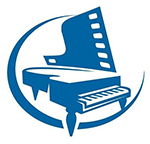One of the greatest predictors of success and progress that is often overlooked is lesson length. Often studios make no requirements on length of the lesson. Many times a young child of 6 or 7 years starts at 30 minutes per week but somehow that length never increases and they are in middle school trying to play intermediate repertoire on 30 minutes per week. Little musicianship can be taught on such a tight time frame. Every lesson becomes a struggle between hearing all the pieces, or working more in depth on just two pieces.
In my studio, I include expected lesson length in my studio policy I decided to go by age of student, not advancement. Teaching sight reading, theory and technical skills is essential to my students’ success, so I account for that. Ages 5-7 may take a 30 minute lesson for one year with the expectation that they will move up. Granted I often allow for two years at the short lesson time due to the development of a young child. By the third year, however, it’s time to move to 45 minutes per week. Generally my students play intermediate literature (early to mid level) after two years, so that is a wonderful time to move up the length.
What about beginners ages 8 and up? I generally start them at the 45 minute length. My experience is that they move so much faster and are developmentally ready for more almost immediately. By the sixth grade, students enter middle school and I have found that if they sound too much like beginners they tend to not last as students.
Hour lessons in my studio are a must by age 12. The few exceptions I have made have not worked out very well. I had one older brother, a transfer, who insisted he only had time for a 30 minute lesson weekly. Why those extra 15 minutes were so critical I have no idea. After some pushing and shoving, I finally agreed. Fast forward two years and his sister is now using the time for him to end the year. The parents wanted to pull him out in March and I pointed to my studio policy that states that December and June (end of semester) are the times to leave.without penalty. What did he learn at the mid intermediate level in two years? Not much. I have wished over and over again I had given the spot to another student. Lessons are learned! The next time a parents pushes about allowing an older student to stay at 30 minutes I will refuse the student. It likely will end the same way.
In most studios filling all your spots is a financial imperative but that does not mean you keep all expectations low and continue to do whatever the family wishes. As early as possible, establish your guidelines and be sure they are clearly stated in your policy. In fact, go over those points with prospective students. You will show you are serious about providing quality instruction above just filling slots.
There are communities and situations (I’m speaking here about those of us running our own businesses, not employed by an academy) where parental push back can be intimidating. You can overcome this with two major steps:
1. Advertise and get the phone ringing. More student inquiries mean more students and that allows for more options for all of us running our own studios.
2. As inquiries rise, offer only the new lesson lengths (by age or development–however you decide). If you are questioned by a current student is allowed to take the shorter time slot, simply explain that your guide lines have changed for the benefit of the students, and that already enrolled students are encouraged but not required to abide by the new regulations. This will at least help develop a more musically and technically sound studio with students that are better trained and make better progress.
These suggestions don’t fix all situations all of the time, but careful planning and a forward looking studio policy can improve the quality of your studio over time. Happy Memorial Day weekend all! Let the summer months commence!
Carol Ann
